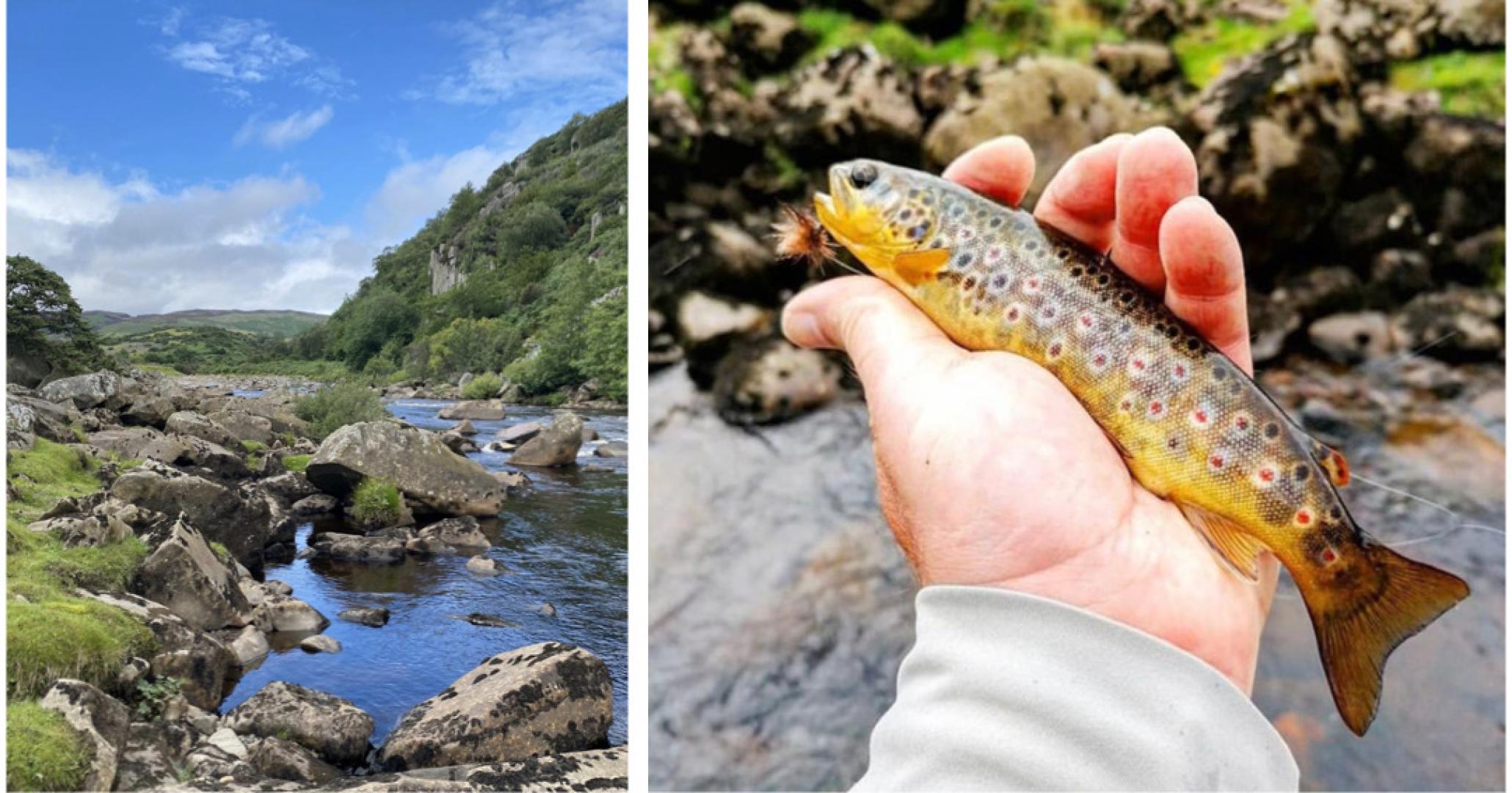Fishing the Tees with Andrew Wilkinson
AUTUMN arrived suddenly, and the brown trout season on the rivers ended with wind and rain.
The Tees rose swiftly, with floodwater pouring off the moors and surging down the tributaries to form a swollen roaring river.
The trout must have wondered what hit them, and so did we, as a spell of warm, calm, sunny weather ended almost in an instant, as September slipped into October.
What would we talk – or write – about without the unpredictable British weather?
The season ended with some hefty brown trout bending rods, with reports of one stunning fish of around eight pounds.
All but the luckiest, or most skilled, anglers can only dream of catching a brown trout of that size.
My season ended with a fish of a pound-and-a-half putting up a tremendous fight in a strong current.
I’d switched from traditional wet flies to small lures, and a session of little action ended with a flurry as several fish, which had ignored the small imitative patterns, couldn’t resist the lures.
Trout that aren’t feeding can be triggered into attack mode if anything resembling a small fish darts through or over their lie.
It’s an exciting form of fishing as the trout hit like a torpedo, often from deep water to crash into a lure near the surface.
Often these fish won’t be hooked, for they can sometimes hit the lure rather than take it in their mouth, their intention being to drive it out of their lie rather than devour it.
I once saw a sea trout follow a spinner into the shallows, before hitting the lure with the side of its head, then shooting into the depths having seen off what it thought was a small fish.
Targeting brown trout with lures can be like salmon or sea trout fishing in miniature, though the migratory species rarely feed in fresh water.
They have to be coaxed into taking a lure or fly out of instinct, either because it represents the food they eat at sea, or to chase it from their territory.
Just as these fish may not intend to eat our offerings, very few freshwater anglers intend to eat their catch. In increasing numbers we practice catch and release.
That changes our philosophy. To many of us, hooking a salmon is the aim, and if it escapes so be it. We have had our sport by tempting and hooking it.
I chatted to a fellow enthusiast on a stretch of the River Wear. He headed downstream and we agreed to meet up later.
When I ventured down to the head of a pool he was fishing, he gave the thumbs up from the lower section of the pool, and gestured toward the far bank.
Thinking that he must have landed a salmon or two, I cast towards the far bank to no avail. When he waded upstream I asked what he had caught.
“Lost one and missed one,” he said cheerily, happy to have made contact with his quarry rather than land it. Perhaps he has evolved further than I have. I still utter some choice language when a salmon slips the hook and the line goes limp, even though I was going to return the fish anyway.
Whether they escape or are returned, what matters is that the fish have enough water in the rivers to migrate from the sea to the redds, (breeding sites) and produce the next generation.
If we can briefly intercept a few before they conclude their journey both angler and fish will be fulfilled by the time winter arrives.






